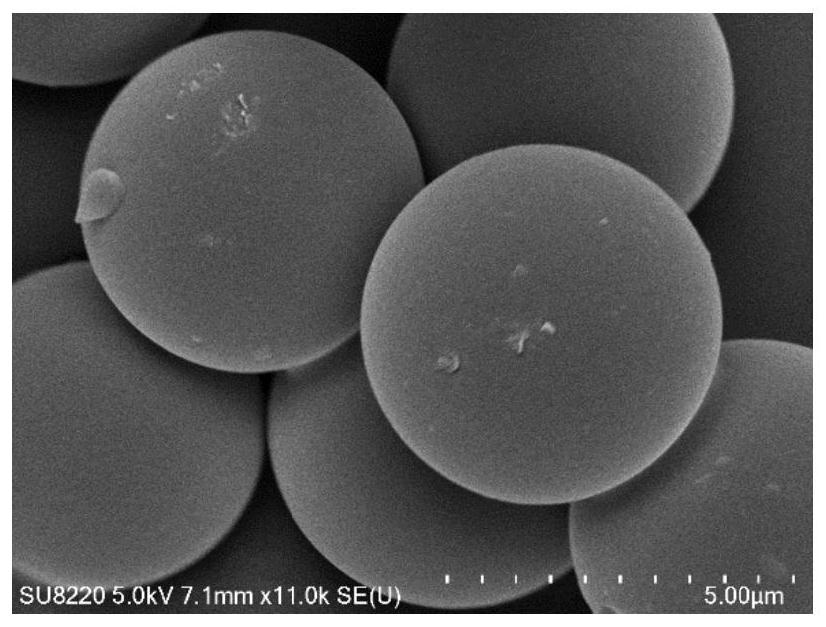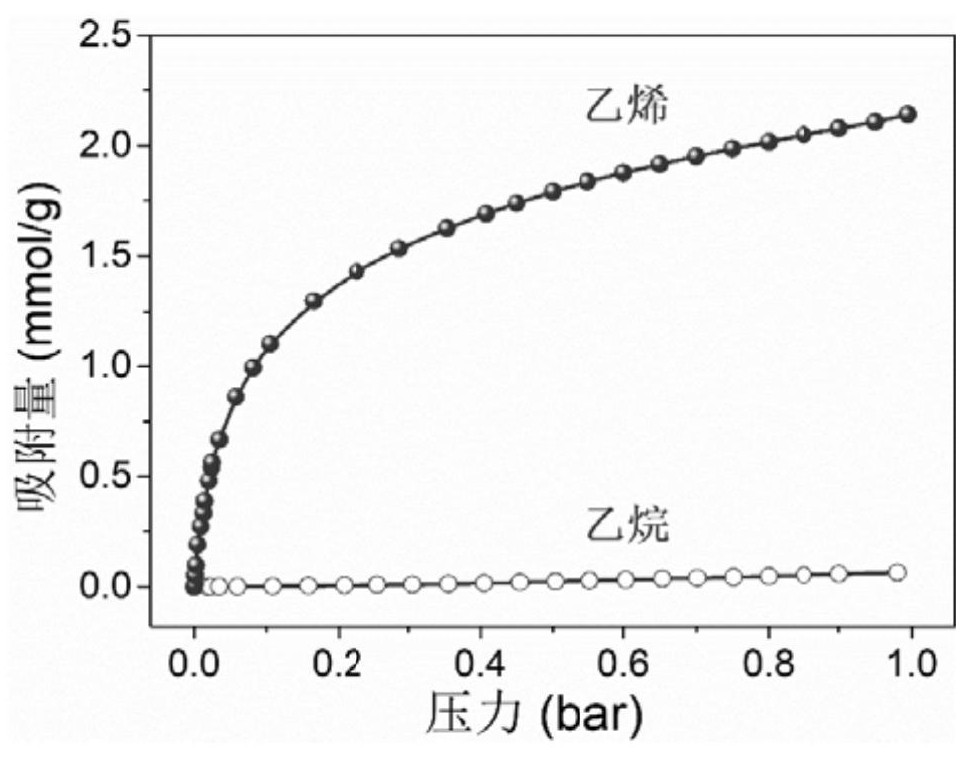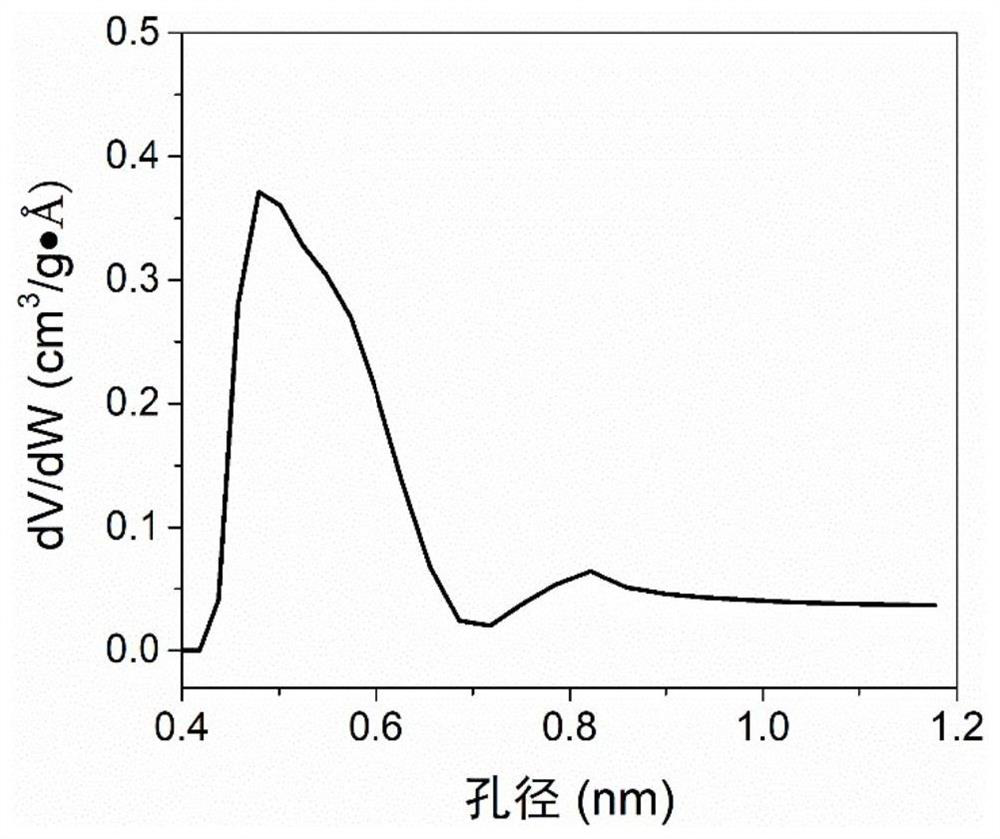Preparation method and application of carbon molecular sieve for separating olefin and alkane
A carbon molecular sieve and olefin alkane technology, which is applied in the fields of carbon preparation/purification, adsorption purification/separation, chemical instruments and methods, etc., can solve the problems of wide pore size distribution, high defect content, difficult fine adjustment, etc., and achieves simple process operation. , to avoid the effect of carbon deposition
- Summary
- Abstract
- Description
- Claims
- Application Information
AI Technical Summary
Problems solved by technology
Method used
Image
Examples
Embodiment 1
[0049] (1) Mix 3g of wheat starch and 30mL of distilled water to form a mixture with a concentration of 0.03g / mL, and stir for 30min to disperse evenly. Then the mixture was transferred to the reactor for hydrothermal polymerization carbonization, the temperature was constant at 200°C, the pressure was 1.55MPa, and the reaction was carried out for 10h to obtain I D / I G Carbon microspheres with a value of 0.94.
[0050] (2) Fully wash the carbon microspheres with deionized water. After the solid is dried, it is placed in a high-temperature tube furnace, heated to 900°C at a rate of 5°C / min under a nitrogen atmosphere, and then carbonized and pyrolyzed for 1 hour. The product obtained after cooling is 1 # No. carbon molecular sieve material.
Embodiment 2
[0052] (1) Mix 6 g of cornstarch and 6 mL of distilled water to prepare a starch aqueous solution with a concentration of 1 g / mL, and stir for 30 min at room temperature to disperse evenly. Then the mixture was transferred to the reactor for hydrothermal polymerization, the temperature was constant at 190°C, the pressure was 1.24MPa, and the reaction was carried out for 14h to obtain I D / I G Carbon microspheres with a value of 0.87.
[0053] (2) Fully wash the carbon microspheres with deionized water. After the solid is dried, put it in a high-temperature tube furnace, heat it to 1000°C at a heating rate of 5°C / min under a nitrogen atmosphere, and then carbonize and pyrolyze it for 2 hours. The product obtained after cooling is 2 # No. carbon molecular sieve material.
Embodiment 3
[0055] (1) Mix 6g of cornstarch and 6mL of distilled water to form a mixture with a concentration of 1g / mL, and stir for 30min at room temperature to disperse evenly. Then the mixture was transferred to the reactor for hydrothermal polymerization, the temperature was constant at 190°C, the pressure was 1.24MPa, and the reaction was carried out for 14h to obtain I D / I G Carbon microspheres with a value of 0.87.
[0056] (2) Fully wash the carbon microspheres with deionized water. After the solid is dried, put it in a high-temperature tube furnace, heat it to 800°C at a rate of 5°C / min under a nitrogen atmosphere, and then carbonize and pyrolyze it for 2 hours. The product obtained after cooling is 3 # No. carbon molecular sieve material.
PUM
| Property | Measurement | Unit |
|---|---|---|
| adsorption capacity | aaaaa | aaaaa |
| adsorption capacity | aaaaa | aaaaa |
Abstract
Description
Claims
Application Information
 Login to View More
Login to View More - R&D
- Intellectual Property
- Life Sciences
- Materials
- Tech Scout
- Unparalleled Data Quality
- Higher Quality Content
- 60% Fewer Hallucinations
Browse by: Latest US Patents, China's latest patents, Technical Efficacy Thesaurus, Application Domain, Technology Topic, Popular Technical Reports.
© 2025 PatSnap. All rights reserved.Legal|Privacy policy|Modern Slavery Act Transparency Statement|Sitemap|About US| Contact US: help@patsnap.com



